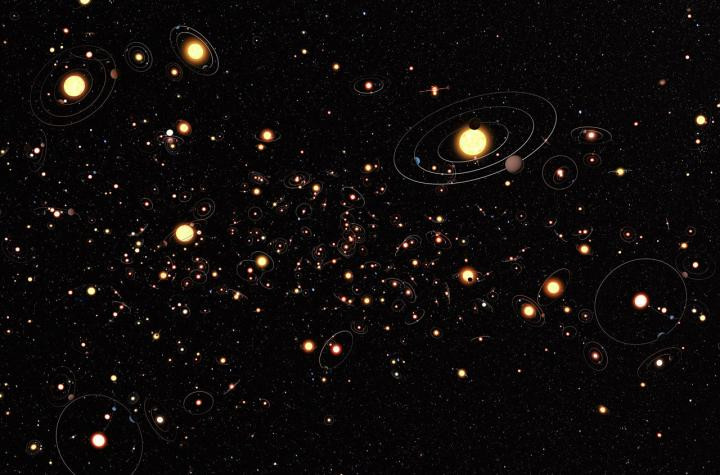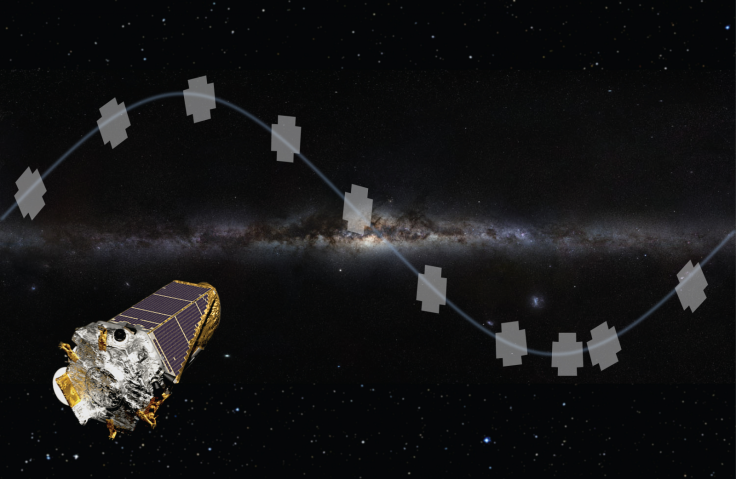Nearly 100 new exoplanets have been discovered using Nasa's Kepler spacecraft in record haul
Thanks to Kepler, we now know that planets around other stars are the rule rather than the exception.
An international team of scientists have confirmed the discovery of almost 100 new planets beyond our solar system which are orbiting nearby stars. They were found using data captured by Nasa's Kepler space observatory as part of its K2 mission.
Researchers have been examining data from the mission - which has so far identified nearly 300 new exoplanets - since 2014. But the latest batch - described in a paper published in the Astronomical Journal - is the most impressive of the K2 mission so far.
"This is more than twice as large as any other single haul of exoplanets found as part of the K2 mission," Andrew Mayo from the National Space Institute at the Technical University of Denmark, told IBTimes UK. "The previous largest batch added 45 new exoplanets to the K2 sample."
Astronomers can identify exoplanets using Kepler because it is able to register dips in light when objects pass in front of their host star. However, researchers must examine these dimming events closely to confirm that they are being caused by transiting exoplanets.
During the latest research, the team found that some of the signals coming from the 275 candidate exoplanets they were investigating were actually being caused by multiple star systems or noise from the spacecraft. However, they were eventually able to confirm the discovery of 95 new exoplanets, ranging in size from smaller than Earth to bigger than Jupiter, and even larger.
The scientists from institutions including Nasa, Caltech, the University of California Berkeley, the University of Copenhagen, and the University of Tokyo, were able to determine the radius of each planet, its distance from its host star and its orbital period, as well as other parameters.

The original Kepler mission began in 2009 when the space observatory was launched into orbit around the Earth to hunt for new exoplanets in a particular patch of the sky. But in 2013, a mechanical failure crippled the telescope. Fortunately, astronomers and engineers managed to save it by reconfiguring the observatory so that it changed its field of view periodically. This marked the start of the K2 mission.
"The most interesting thing about this new release of planets is that they orbit stars that are quite bright relative to the original Kepler mission, so many will be excellent targets for follow-up observations such as mass measurements and atmospheric characterisation," Mayo said. "In comparison very few targets from the original Kepler mission were suitable for those types of analyses".
Finding planets around bright stars is good news for astronomers because they can learn a lot about them using ground-based observatories. One world of particular interest among the latest batch was found to orbit the brightest star to host a planet ever found using Kepler.

The search for new exoplanets is currently one of the most exciting areas of space science, one that is providing fascinating insights into our universe. We now know that planets around other stars are the rule rather than the exception and that there are likely billions in the Milky Way alone.
The field is relatively young – the first exoplanet was discovered in 1992 – but it is rapidly maturing. To date, more than 3,700 exoplanets have been confirmed, with more than 2,500 of those identified by the two Kepler missions.
"The original Kepler mission was our first glimpse into the incredible abundance and diversity of exoplanets in the Galaxy," Mayo said. "It taught us volumes about the types of exoplanets and exoplanet systems that can exist in nature and gave us an idea of what the general exoplanet population looks like."
"The follow up K2 mission, on the other hand, has provided us with a great deal of interesting individual planets and systems that we can now start to study in greater detail. While Kepler gave us a broad overview of exoplanets, K2 is helping us dive much deeper," he added.
Using the new data, scientists can start looking closer at the density, composition and even atmospheres of the exoplanets.
And with upcoming missions, such as the powerful James Webb Telescope and the Transiting Exoplanet Survey Satellite, astronomers will be able to make unprecedented observations of these planets and identify which may be capable of supporting life, among other goals.





















